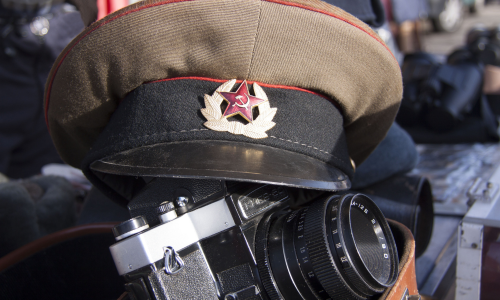
Unraveling the Secrets of Soviet Military Uniform History From 1917 to Present Days
Trace early uniform origins. Discover the secrets of the Soviet military uniform.
Picture yourself flipping through old photos of soldiers in simple tunics. The story of Soviet military uniform history begins long before World War II, with a radical shift following the 1917 Revolution. In this section, you’ll see how the Red Army’s first outfits evolved from Tsarist legacy pieces.
Imperial to Red Army transition
Before 1917, Imperial Russian troops wore high-collared dark green tunics and brass buttons. After the October Revolution, the new Bolshevik leadership needed a fresh look that broke from the past. They kept the basic green shade but swapped out fancy trims for plain black piping, symbolizing a break with Tsarist tradition.
1920s uniform reforms
In the early 1920s, the army rolled out the M1924 tunic, a loose-fit wool garment with stand-up collars. It used simple wool serge to cut costs and speed up production, so you’ll often spot factory stamps on original pieces. By 1926, shoulder straps replaced collar tabs, marking one of the first steps toward standardized insignia.
Explore the World War II era.
World War II demanded faster uniform updates to suit vast frontlines and harsh climates. You’ll find that the service tunics and belts you see in museums reflect urgent battlefield tweaks.
M43 tunic and gear
In 1943, the Red Army introduced the M43 field tunic, featuring patch pockets and straight-cut trousers for more effortless movement. Soldiers paired it with leather jackboots or simple ankle boots called “kirzachi.” For extra warmth, many clipped on fur-lined sheepskin coats in winter. For more on postwar service outfits, check out the soviet army uniform.
Unit symbols and colors
Branch-specific piping and collar tabs helped you spot an infantryman from a tank crew member at a glance. Rifle units used red piping, artillery went in black, while engineers chose blue. Shoulder boards displayed stars to signal rank, so one star meant junior lieutenant, two stars junior engineer lieutenant, and so on.
Examine Cold War designs.
As tensions mounted, uniform designs balanced practicality with a more polished look. You’ll notice cleaner cuts and brighter colors by the 1950s.
Summer and winter kits
The classic olive-green summer uniform stayed in service until the late 1960s. Come winter, soldiers swapped it for a quilted cotton jacket called the telogreika, paired with padded trousers. Officers often upgraded to longer wool coats, complete with velvet collars and brass buttons.
Parade and formal wear
For parades and diplomatic events, the Soviet military dressed to impress. The kinzhal-style tunic had a high collar and gleaming gold braid. Generals wore double-breasted coats with epaulettes, while enlisted personnel sported single-breasted jackets with bright buttons.
Note insignia and details.
Ever spotted a shoulder board with a star and wondered what rank it signals? Insignia tells the richest stories in soviet military uniform history.
Rank badges
Shoulder boards first appeared in 1918 but really took off in 1935. They varied by rank, from plain boards for privates to ornate gold-embroidered ones for marshals. Look for maker’s marks on the reverse to confirm authenticity.
Branch colors and patches
Each service branch used its own color scheme, applied to collar patches, piping, and hat bands. Air Force crews wore blue edging, the medical corps had white, and armored units chose black. Subtle fabric textures also hint at an item’s era and status level.
Guide for collecting and caring
If you’re hunting original uniforms, a few quick checks save you from costly mistakes. Then, proper care ensures your collection remains in museum-ready condition.
Authenticity checks
- Inspect fabric weave and weight against known samples
- Look for clear stamps indicating the factory and the date of issue
- Verify stitching patterns match period-correct construction
Cleaning and storage
- Gently brush dust off wool pieces with a soft garment brush
- Air out items in shade, avoid direct sunlight that fades colors
- Store in breathable garment bags with acid-free tissue to preserve shape
Recognize lasting legacy
The impact of Soviet military garb reaches far beyond history books. You’ll find echoes of those crisp lines in modern tactical wear and in movies recreating epic battles. Collectors prize these uniforms not just for their sturdy materials but for the stories stitched into every seam.
Key takeaways
- Early uniforms shifted from elaborate Imperial garb to plain Red Army tunics. The
- World War II era introduced practical patches, the M43 tunic, and branch colors.
- Cold War designs balanced function with formal parade dress
- Insignia and maker’s marks help you confirm authenticity
- Gentle cleaning and proper storage protect your collection for years
Now that you’ve unraveled the secrets of soviet military uniform history, what will you add to your display next? Share your finds or questions in the comments below so everyone can learn from your discoveries.
Another interesting video about the Soviet Military Uniform History

